Functional Anatomy
Functional Anatomy
Jean Luc Cornille
Equine Biomechanics
After having explained how the horse’s physique works, in the light of new knowledge, the course is now focusing on the different gymnastic exercises that can be used for the horse education and reeducation.
Most of the gymnastic exercises are known as “Dressage Movements” In the French language, “dressage” does have a meaning of education. When François 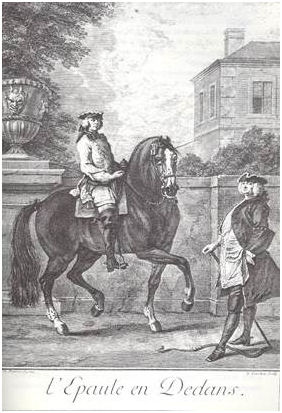 Robichon de la Gueriniere invented the shoulder in, dressage tests did not exist. The sole purpose of the shoulder in was a gymnastic exercise preparing the horses’ physique and mental processing for the athletic demand of performing with a rider.
Robichon de la Gueriniere invented the shoulder in, dressage tests did not exist. The sole purpose of the shoulder in was a gymnastic exercise preparing the horses’ physique and mental processing for the athletic demand of performing with a rider.
When dressage tests took form, gymnastic exercised were standardized for presentation, giving birth to the judging criteria. Originally, the judging standards were conceived to distinguish horses physically prepared for the athletic demand of the performance from horses executing the move out of their talent but without adequate body coordination.
When in 1932, Taine and Colonel Lesage won the Dressage Olympic Gold Medal; he performed simple movements with class. Class as well as elegance demands elaborated training technique. When scientific knowledge was not providing advanced understanding of the equine physiology, class was the outcome of the rider’s intuition. Lesage’s half passes at the walk were executed in perfect control of transversal rotations. Lesage did not scientifically know about transversal rotation since the existence of rotation coupled with lateral bending was not discovered at this time. Lesage intuitively understood the coordination of the horse physique best suited for the athletic demand of half pass.
These two pictures juxtapose a competitive rider and a classy rider. I use the word classy instead of classic because some classical trainers have no class at all; they criticize competitive dressage but they promote the same errors. They teach the movements but do not focus on the coordination of the horse’s physique allowing the horse to deal with the athletic demand of the performance. On the left picture, the competitive rider presents a dysfunctional horse executing half pass with an inverted rotation of the thoracic spine. By contrast, the rider with class, who, in the circumstance is Colonel Margot, presents a horse correctly coordinated for the athletic demand of the performance. Margot was another rider understanding intuitively the body coordination allowing the horse to perform soundly and at its 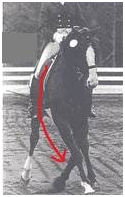
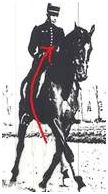
utmost potential. Margot performed biomechanically correct half pass before the concept of proper or inverted rotation was identified and explained.
Even without Margot’s unusual intuition, modern riders could coordinate efficiently the horse’s physique for the athletic demand of the performance by updating traditional beliefs to actual understanding of the equine physiology. Phenomena that gifted Masters have sensed by intuition are now scientifically explained. With knowledge also comes the ability of identifying training techniques teaching tricks but failing to properly coordinate the horse physique for the athletic demand of the performance. Knowledge also exposes side effects that were unknown from our predecessors.
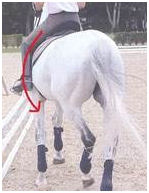
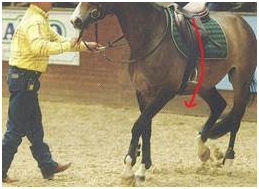
The two pictures illustrated inverted rotation. One is about making the horse moving side way with a whip. This type or training is about pantomime. The horse moves side way but in a dysfunctional way. There is not educative or athletic value to such approach.
The other movement is known as haunches in. The move could eventually been executed with proper rotation if the rider was aware of the fact that lateral bending can be associated with inverted rotation. On the picture, the rotation is inverted and therefore executed this way, the move is a bad exercise.
By comparison, this picture of Chazot shws how the real shoulder in looks like. It is a completely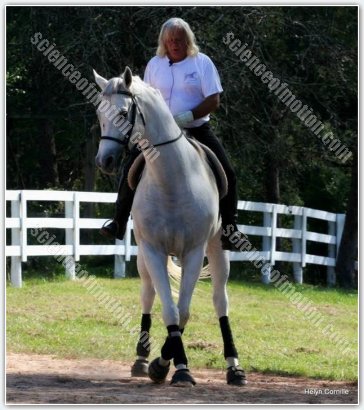
different movement. If there is something classical in moving the horse side way with a whip, it is the reflection of Monsieur de la Gueriniere about trainers that sweep along with cheap techniques. They only lead to “The flattering and chimeric satisfaction of thinking themselves more expert than the others.” (Ecole de cavalerie, François Robichon de la Gueriniere, 1731). It is not because trainers advertise them as Masters than they are Masters. Instead of simply looking at the movement, look at how the horse executes the move from a biomechanical perspective. Then, you will see the difference between marketing garbage and sound equitation.
Edsger Dijkstra questions, "Why has elegance found so little following?" Class demands skill, but also knowledge; a horse can sturdily execute the movements but without elegance. The one which performs with class is supported by a technique coordinating his physique adequately for the effort. This fundamental difference distinguishes classic and therefore class, from elementary training approaches that label themselves as classic but teach the move without knowledge and understanding of the underlining biomechanics factors.
Science Of Motion
Jean Luc Cornille
scienceofmotion.com


